IUPAC 2025 in Kuala Lumpur Opened with Focus on Sustainability and Excellence
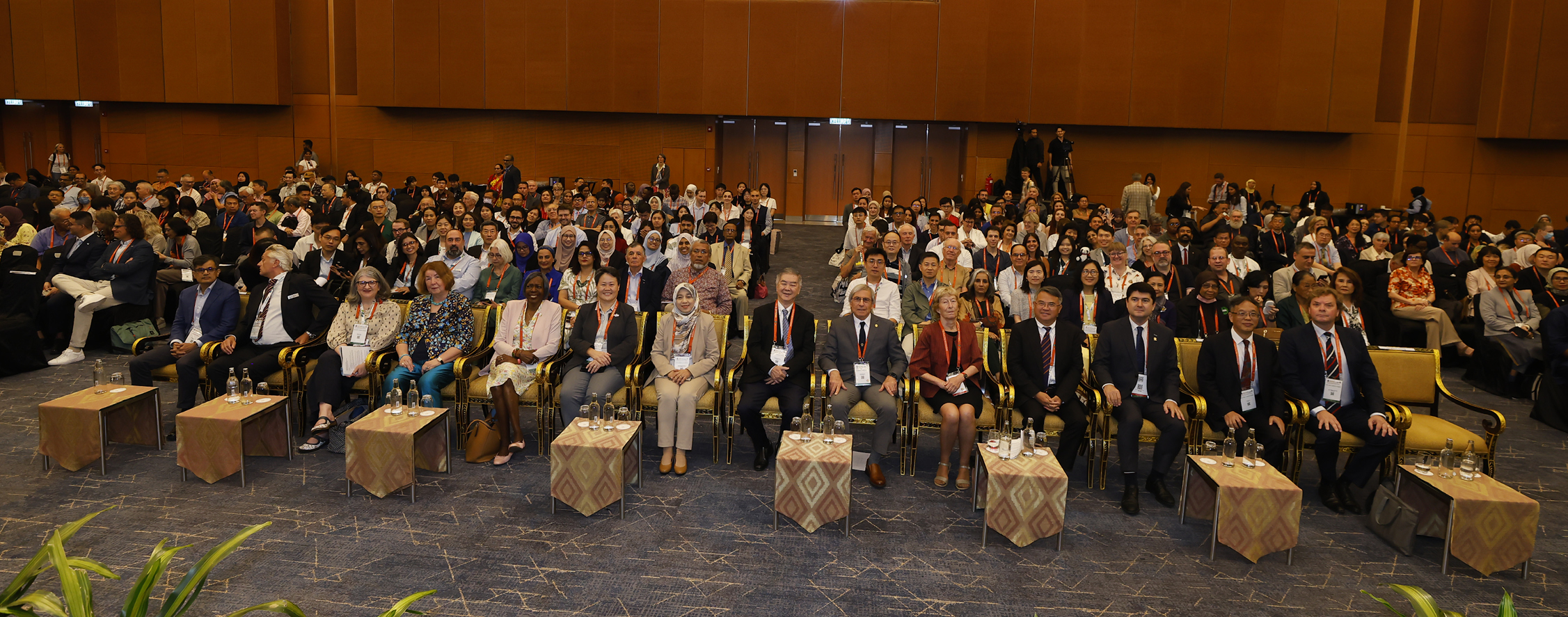
On 14 July 2025 at the Kuala Lumpur Convention Centre, hundreds gathered from around the globe for the official launch of the 50th IUPAC World Chemistry Congress (50WCC), held alongside the 53rd IUPAC General Assembly. Under the theme “Chemistry for a Sustainable Future,” this joint opening marked the first time these major IUPAC events took place in an ASEAN country—sparked international attention and regional pride.
The Opening Ceremony began at 3:00 PM. Delegates were greeted with a blend of local hospitality and global ambition. Attendees heard warm welcoming remarks from Datuk ChM Dr. Soon Ting Kueh, President of Institut Kimia Malaysia, who underscored the event’s historic significance and the country’s expectation that chemistry will drive sustainability initiatives across food, energy, and environment.
Ehud Keinan, President of IUPAC, opened the ceremony saying that this congress is the high point in the 106-year history of the organization, founded in 1919. Keinan believes the image of chemistry around the world has improved greatly from the end of the last century. He believes the world recognizes the necessity of chemistry in modern life and recognizes, for example, that the semiconductor industry is a chemical industry.
The Congress was officially declared open by Datuk Dr. Soon Ting Kueh, who ceremoniously struck the gong three times, symbolising the commencement of the congress and setting the stage for a week of scientific exchange and collaboration.
Awards followed. The first group was the twelve 2025 Distinguished Women in Chemistry/Chemical Engineering.
The second group includes the 2025 and 2024 recipients of the IUPAC-Solvay International Award for Young Chemists. The awards were presented by Javier García Martínez, IUPAC Past President and Ajay Khandkar from Solvay.
Next was the IUPAC–Zhejiang NHU International Award for Advancements in Green Chemistry. Announced at the ceremony, the Experienced Chemist award went to Javier Pérez Ramírez (ETH Zurich). Simultaneously, the Young Chemist awards were presented to Jianbin Li (Chinese University of Hong Kong), Sahel Fajal (Indian Institute of Science Education and Research), and to Philip Stanley (Technical University of Munich). Recipients were honored on stage by IUPAC President Ehud Keinan and Li Haoran of NHU.
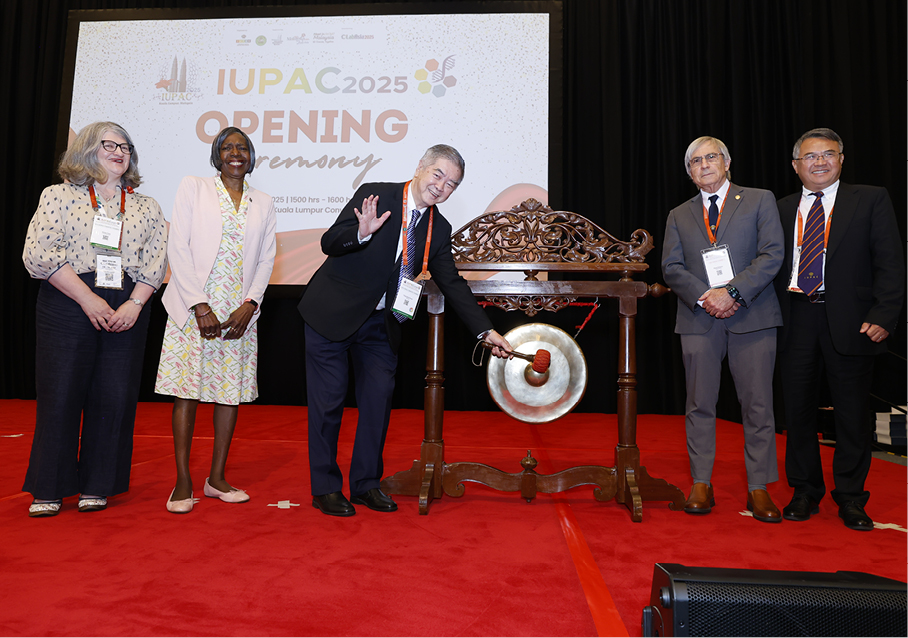
On stage for the opening gong strike (from left): Helen Pain, Dorothy J. Phillips, Soon Ting Kuek, Eihud Keinan, and Zhigang Shuai
These awards, co-established by NHU and IUPAC, reflect a growing emphasis on green chemistry at the intersection of academia, industry, and global development. The program continues to build momentum: during the congress, Javier PérezRamírez delivered an award lecture, and Li Haoran spoke on low-impact phenol-to-quinone transformations—promising industrial applications and cleaner production processes.
The last award presentation was the 2025 Chemistry Europe Award to Stefan Grimme from the University of Bonn, Germany, in recognition of his pioneering work in theoretical and computational chemistry. Jan Willem Toering, Chemistry Europe Council Member and CEO of the Koninklijke Nederlandse Chemische Vereniging (KNCV), presented the award, acknowledging Grimme’s scientific achievements, while the Award Lecture took place the following day in a session chaired by Jing Tang from Wiley Shanghai.
After the awards and before the audience transitioned to the Welcome Reception, attendees heard two plenary lectures. The first was delivered by Peter Mahaffy, King’s University, Canada on the topic “Realizing Chemistry’s Pivotal Role in Our Sustainable Future” and ended with launching the IUPAC Guiding Principles of Responsible Chemistry website (https://iupac.org/responsible-chemistry/) . Second was David Winkle, La Trobe University, Australia on “The Exciting Potential of AI for Drug and Therapeutic Discovery.”
The Welcome Reception was an opportunity for attendees to connect before a packed week of symposia and side events.
IUPAC 2025 opened with high-level talks and awards rooted in sustainable innovation underscored a realignment of chemistry with global needs. This first phase of the congress made clear that the agenda was about applying science to urgent problems.
The Conference by the numbers
More than 3000 delegates from 82 countries participated in the long week event combining the IUPAC GA and Congress.
IUPAC2025 is a truly global event. The International Advisory Board consisted of Ehud Keinan (President, IUPAC) as Chair and Datuk ChM Dr Soon Ting Kueh (President, Institut Kimia Malaysia ) as Co-Chair. The International Advisory Board members consisted of Andy Tzi Sum Hor (Agency for Science, Technology & Research, Singapore), Ernesto Joselevich (Weizmann Institute of Science, Israel), Francesca Kerton (Memorial University of Newfoundland, Canada), Javier García Martínez, (Past President IUPAC, University of Alicante, Spain), Jung-Il Jin (Korea University), Marietjie Potgiete (University of Pretoria, South Africa), Mary Garson (Vice President and President Designate, IUPAC, University of Queensland, Australia), Mei-Hung Chiu (National Taiwan Normal University), Peter Atkins (University of Oxford) and Zhigang Shuai (Tsinghua University, China).
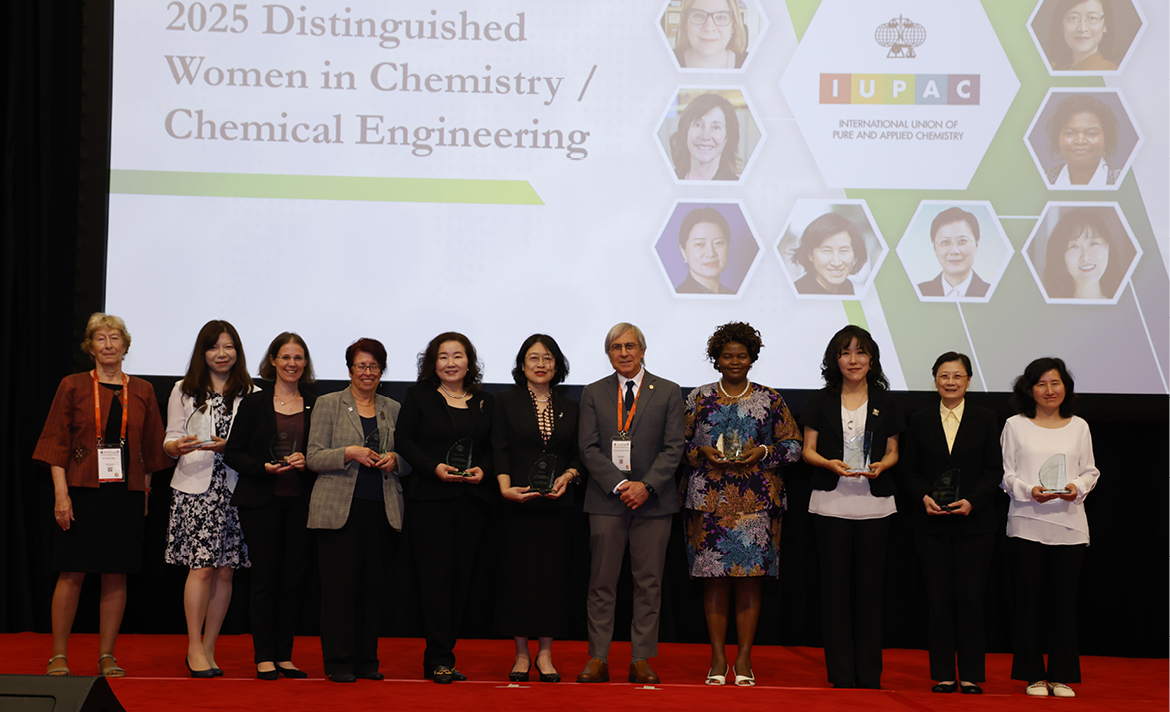
IUPAC 2025 National Organising Committee Chair was Datuk ChM Dr Soon Ting Kueh, Scientific Committee Chair was ChM Dr Edward Juan Joon Ching, and 53rd IUPAC General Assembly Committee Chair was ChM Dr Yang Farina Abdul Aziz.
IUPAC General Assembly, 12–17 July, 2025
IUPAC carries out its work through 8 Divisions and a number of Committees. The Annual meetings of all the Divisions and Committees were held during the General Assembly. The 8 Divisions are: (i) Physical and Biophysical Chemistry Division (ii) Inorganic Chemistry Division (iii) Organic and Biomolecular Chemistry Division (iv) Polymer Chemistry Division (vi) Analytical Chemistry Division (vii) Chemistry and the Environment Division (vii) Chemistry and Human Health Division (viii) Chemical Nomenclature and Structure Representation Division.
IUPAC Committees include (a) Committee on Chemistry and Industry (b) Committee on Chemistry Education (c) Committee on Chemical Research Applied to World Needs (d) Inter-Divisional Committee on green Chemistry for Sustainable Development (e) Committee on Ethics, Diversity, Equity and Inclusion Meetings of different Sub-committees like Crop Protection Advisory Group Sub-Committee, Subcommittee on Polymer Terminology and Interdivisional Subcommittee Critical Evaluation of Data, and were also held.
Young Observers from different countries were also invited to IUPAC2025.


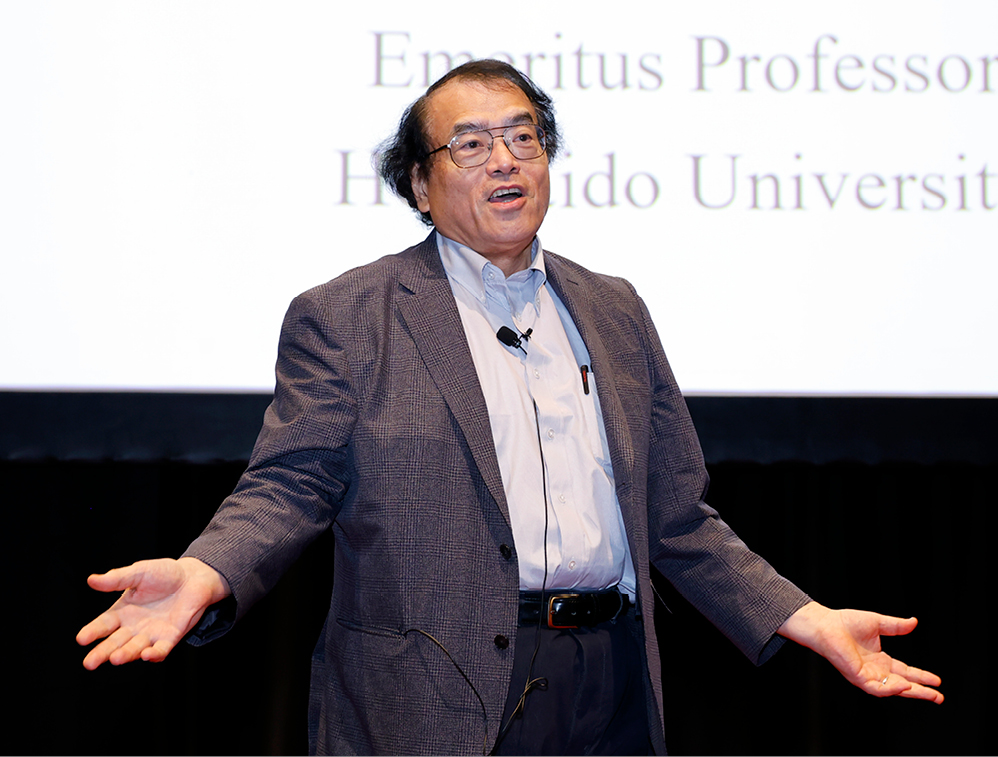
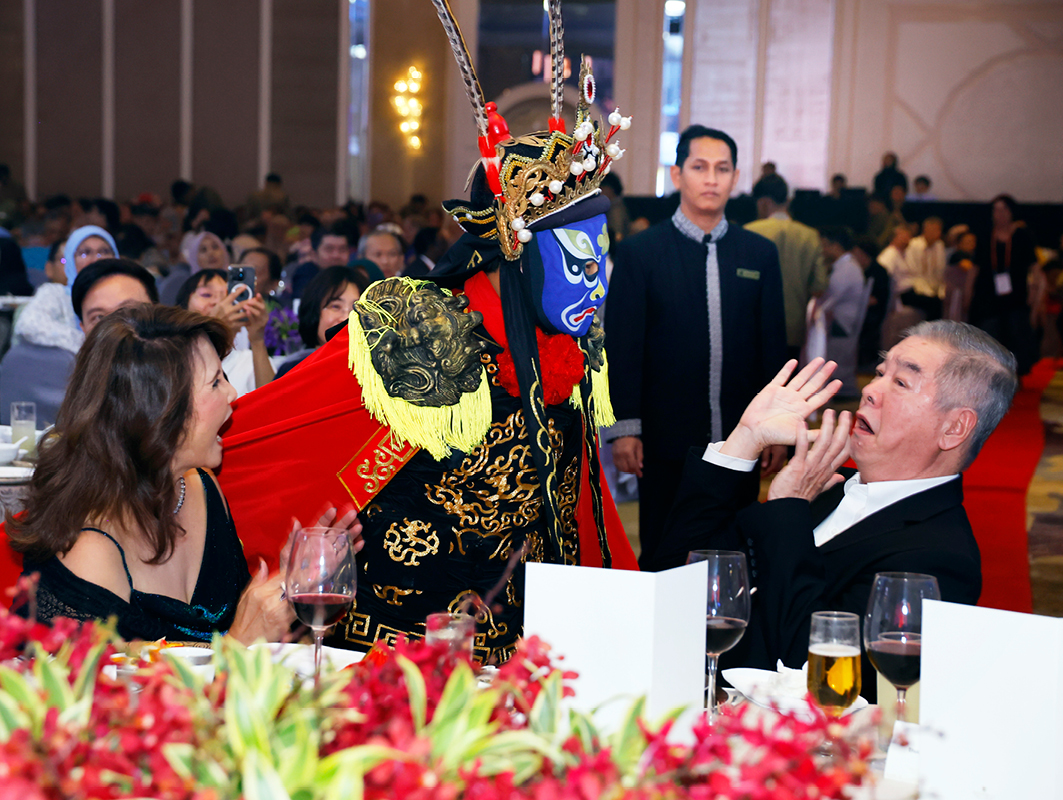
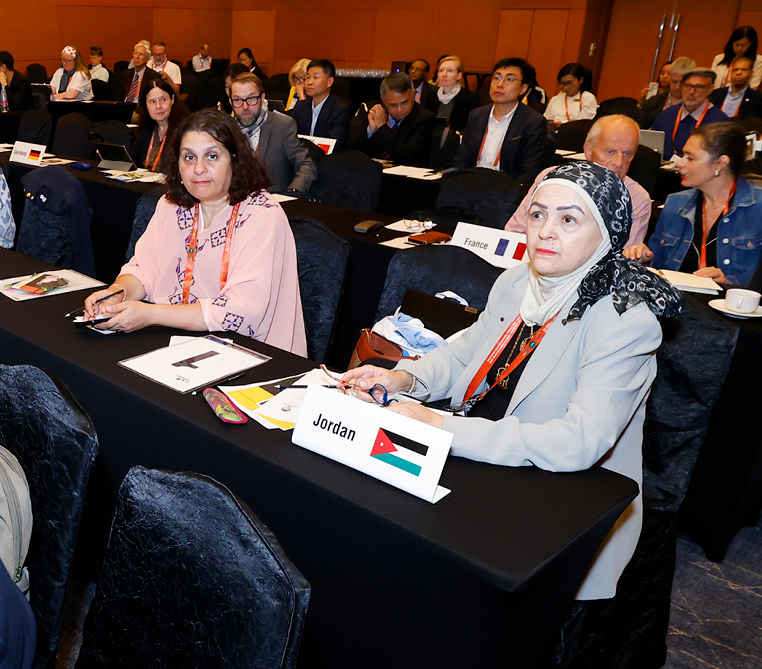

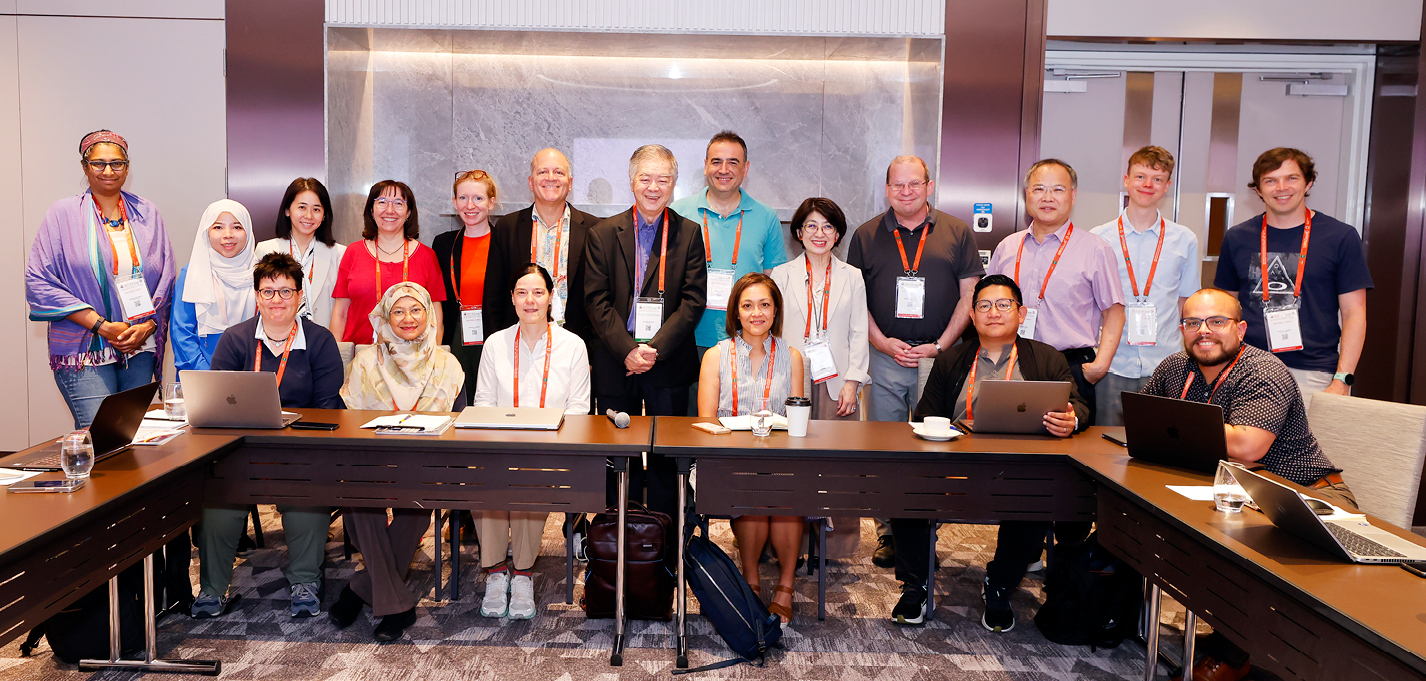
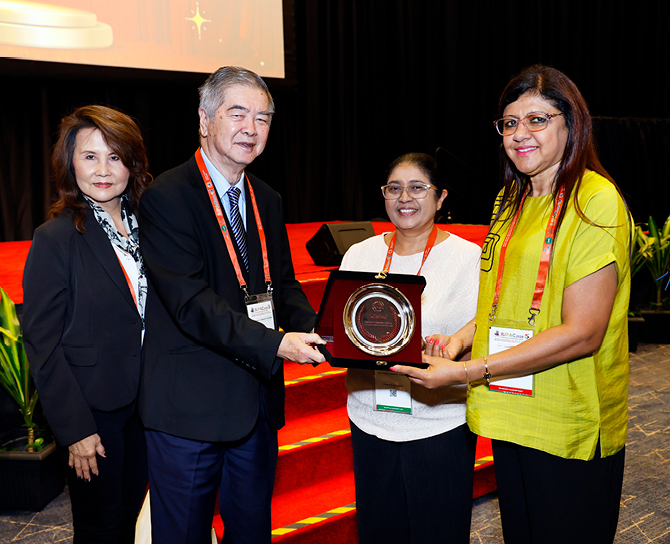

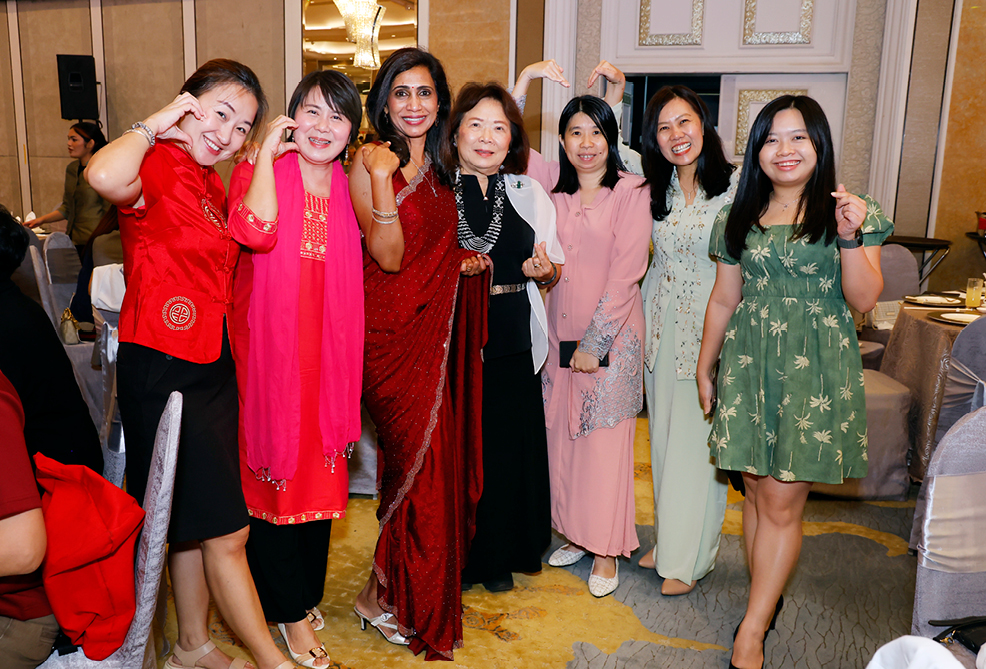
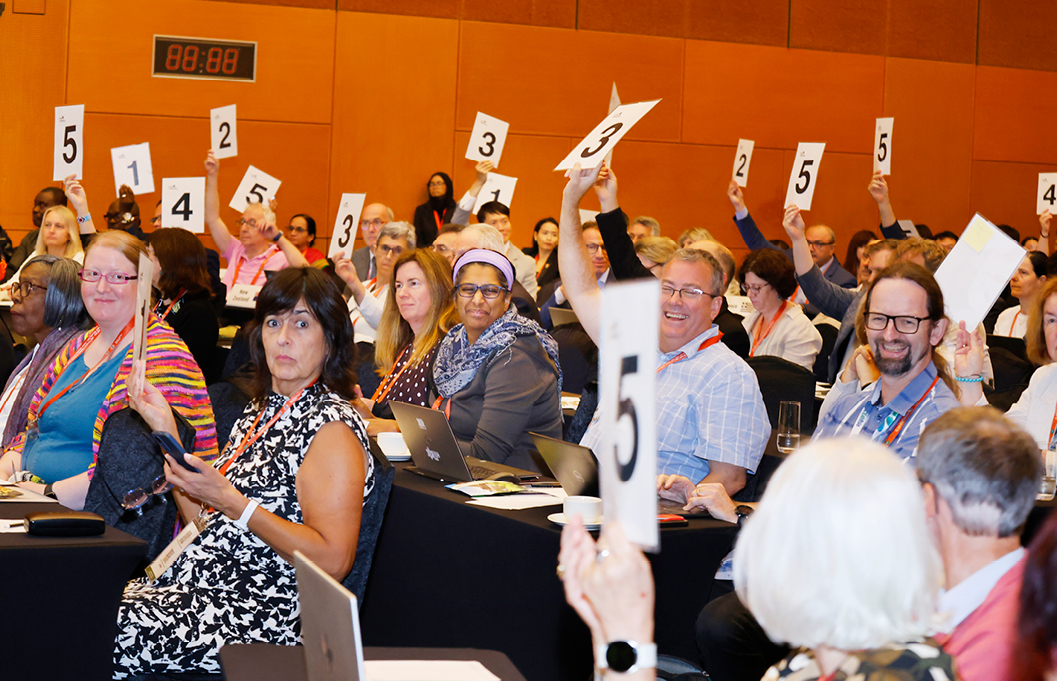
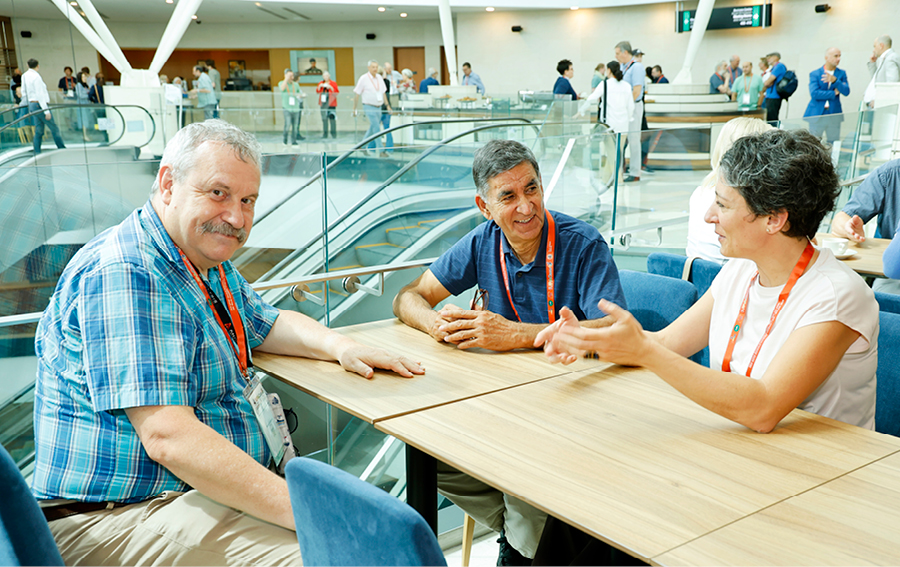

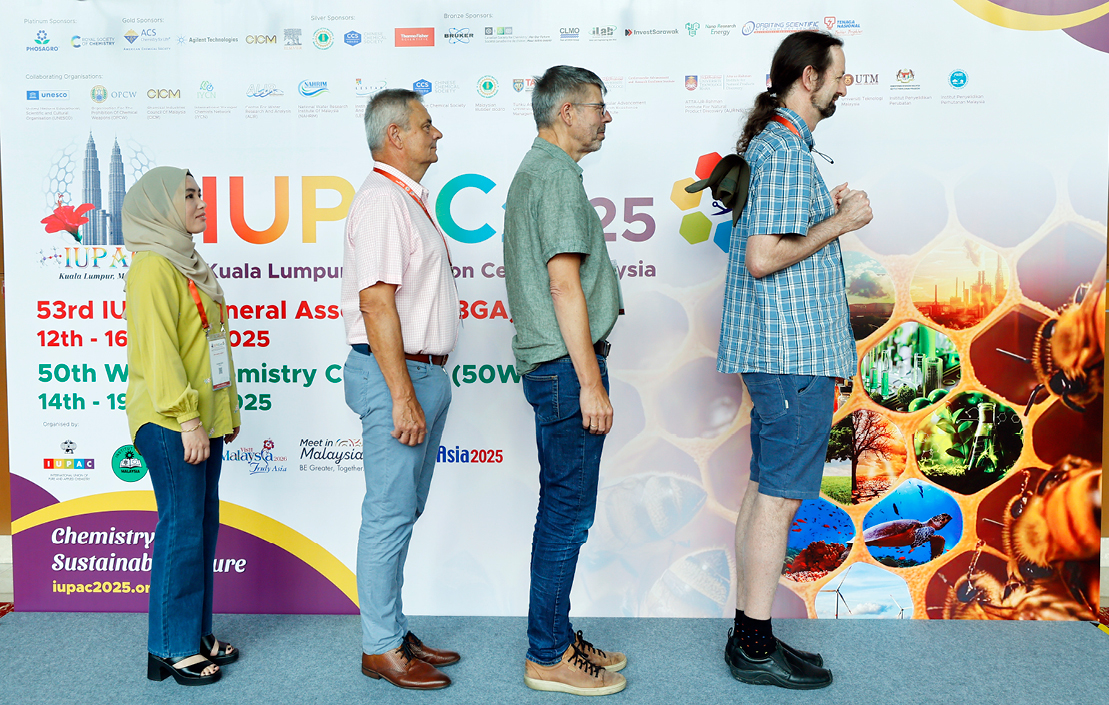
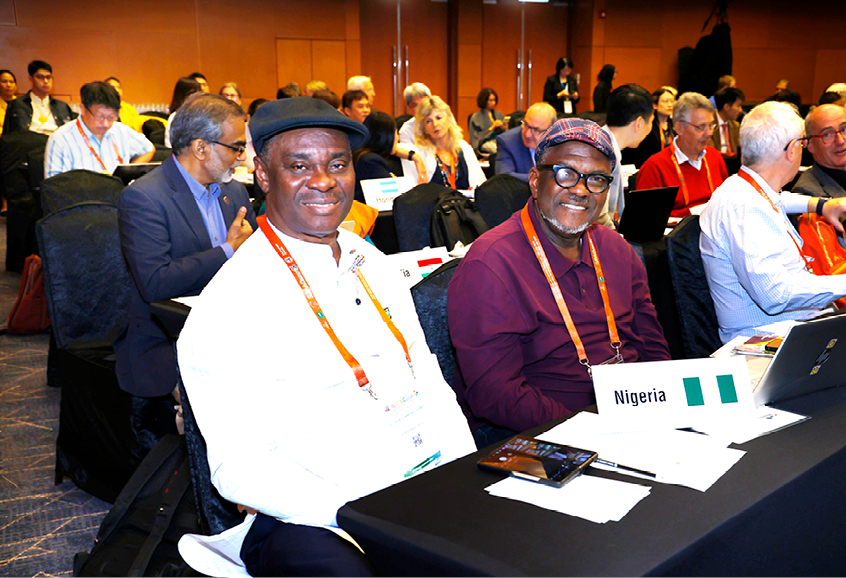
View the full gallery of pictures from IUPAC 2025 in Kuala Lumpur at iupac2025.org/image-gallery

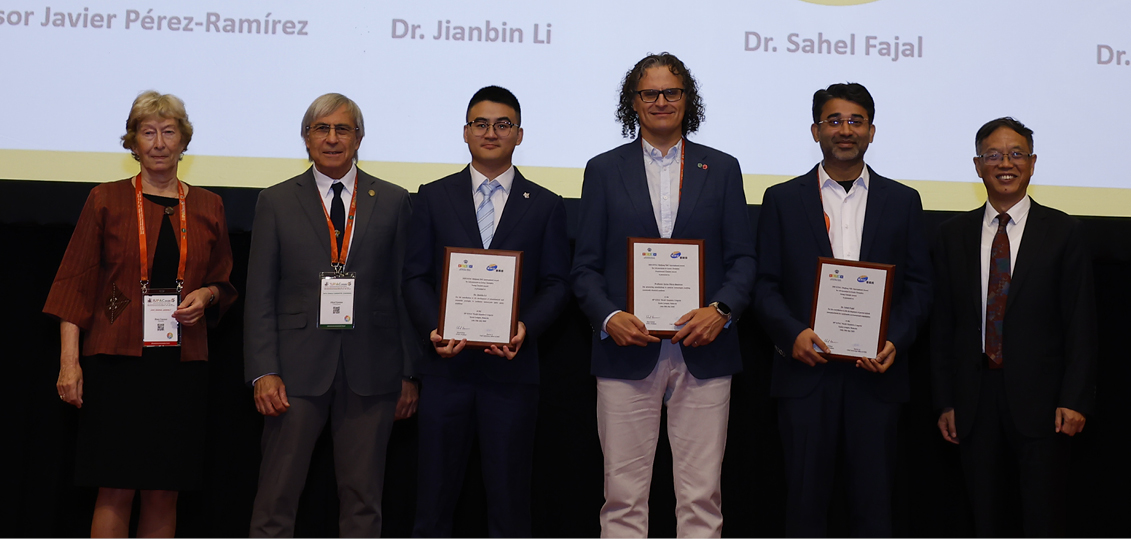
An interesting event was the Joint Networking Session of IUPAC and International Young Chemist Network, followed by a poster presentation. In this session, young chemists from many parts of the world interacted with President/Chair/Representatives of different Divisions and Committees of IUPAC in a speed networking session to understand the diverse activities of IUPAC. This was followed by poster presentations by IUPAC Divisions and Committees.
A “Town Hall Meeting” was held in which all IUPAC members present were invited. Mary Garson, IUPAC Vice President and President Elect led the discussion. In this meeting, opinions of members were sought on restructuring proposal of IUPAC.
World Chemistry Leadership Meeting (WCLM)
The theme of WCLM was “Trust in Science and the Right to Science”.
WCLM brought together a distinguished group of scientific leaders and thinkers to explore a topic of growing global importance: trust in science.
See separate report
Council Meeting
The Council is the primary IUPAC governing body to which the Science Board, Executive Board, Standing Committees, Divisions, Commissions, and all other IUPAC bodies are responsible. The Council is composed of Delegations from the National Adhering Organizations (NAOs) and each NAO appoints its Delegates for every Council meeting.
IUPAC Council meetings were held on 15 and 16 July and led by IUPAC Secretary General Zoltan Mester. Many important discussions and decisions were taken, including discussion of the relocation IUPAC Head Office, approval of the four new members countries, namely Estonia, Guatemala, Peru and Singapore.
IUPAC Recommendations on Nomenclature, Symbols and Standard Atomic Weights were adopted. The Council also voted to elect key members for 2026-27 biennium.
IUPAC President Ehud Keinan presented his report on the State of the Union and highlighted achievements during the biennium.
IUPAC Vice President and President Elect Mary Garson made Critical Assessment of the programs and projects of IUPAC. She highlighted the paramount importance of strengthening global project systems, fostering diversity across gender, age, and regions, and leveraging education and ethics to align with Sustainable Development Goals. Garson underscored IUPAC’s strategic role in large interdisciplinary initiatives aimed at meaningful contributions to sustainable development, and emphasized anticipating challenges and opportunities to reinforce IUPAC impact on global scientific collaboration and policy.
IUPAC Division Presidents and Standing Committee Chairs presented their reports through posters. IUPAC Treasurer Wolfram Koch presented Financial Report and Budget Proposal. Report of the Secretary General was presented by Zoltan Mester.
The Council elected new Officers and members of the Executive and Science Board Member, including Christine Luscombe, Vice President and Derek Craston, Treasurer starting on January 2026.

Delegates appointed by National Adhering Organizations (NAOs) vote at the council meeting.
Bids were received from China, Thailand, and Singapore to host IUPAC 2031. The Council voted in favour of China.
See Actions taken by IUPAC Council, at https://iupac.org/actions-taken-by-iupac-council-kuala-lumpur-malaysia-july-2025/
IUPAC World Chemistry Congress 2025, 14–19 July
The 50th World Chemistry Congress was held from 14–19 July. After the joint inaugural session, a large number of Symposiums and Workshops organized under 3 clusters:
Cluster I: Pure & Applied Chemistry
Physical and Biophysical
Inorganic and Bioinorganic
Organic & Biomolecular
Polymers and Materials
Analytical & Forensic
Environmental
Cheminformatics
Education & Public Understanding
Human Health and Well Being
Green Chemistry
Cluster II: Chemistry & SDGs
SDG2: Zero Hunger [Agriculture & Food Chemistry]
SDG3: Good Health & Well Being [Natural Products & Medicinal Chemistry]
SDG5: Gender Equality [Ethics, Diversity and Inclusion in Science Education]
SDG6: Clean Water & Sanitation [Water & Wastewater Management]
SDG7: Affordable & Clean Energy [Renewable & Low-cost Energy]
SDG13: Climate Action [Sustainable & Green Chemistry]
Cluster III: Thematic Sessions
Artificial Intelligence in Chemistry
Green Chemistry in Education
Symposium on Chemical Safety and Security
Malaysian Rubber Board (MRB) Celebrating 100 Years of Excellence in Rubber and Latex Sciences
Professional and Responsible Practices in Chemistry Including Responsible Care
PhosAgro/UNESCO/IUPAC Symposium—Green Chemistry: Experiences and Opportunities for Co-operation for Sustainable Future
IYCN/MYCN Young Chemist Programme
Plenary Lectures:
The following Plenary lectures were presented
Realizing Chemistry’s Pivotal Role in Our Sustainable Future, Peter Mahaffy, King’s University, Canada
The Exciting Potential of AI for Drug and Therapeutic Discovery, David Winkle. La Trobe University, Australia
Green Chemistry toward Low sugar Universal Vaccines and Glycoengineered Antibodies Chi-Huey Wong, Scripps Research Institute, United States
Pushing Boundaries: Innovations in Organometallic Complexes and Catalysts for Advanced Chemical Transformations Zhaomin Hou, RIKEN Center for Sustainable Resource Science, Japan
Rethinking Fluorine Chemistry with Global Challenges in Mind, Veronique Gouverneur, University of Oxford, United Kingdom
Advancing the Frontiers of Semiconducting Polymers Through Precision Synthesis, Christine K Luscombe, Okinawa Institute of Science and Technology, Japan
Design and Synthesis of Nanomaterials for Biomedical and Energy Applications, Jackie Yi-Ru Ying, King Faisal Specialist Hospital & Research Centre, Saudi Arabia
Continuous Movement of Carbon Atoms in Organic Molecules: Merry-Go-Round Reactions Tamotsu Takahashi Hokkaido, University, Japan
From Coherence in Photosynthesis to Chemical Quantum Information Science, Gregory D. Scholes, Princeton University, USA
Single Atom Catalysis, Tao Zhang, Dalian Institute of Chemical Physics, Chinese Academy of Sciences, China
Biosensors Without Frontiers: Nucleic Acid Testing in Low Resource Areas, EAH Hall, University of Cambridge, UK
Cinematic Chemistry: The Journey of Electron Microscopy From Organic Synthesis To Molecular Statistics, Eiichi Nakamura, The University of Tokyo, Japan

The Committee on Chemistry Education gathers for a picture at IUPAC2025
Award Lectures
2025 CHEMISTRY EUROPE AWARD LECTURE: g-xTB: DFT accuracy at tight-binding speed, Stefan Grimme, University of Bonn, Germany
IUPAC-SOONG PRIZE FOR SUSTAINABLE CHEMISTRY LECTURE: Reticular Chemistry, Climate, AI, Omar Yaghi, University of California, United States
PhosAgro/UNESCO/IUPAC/IKM Lecture: The Stockholm Declaration on Chemistry for the Future, Paul T Anastas, Yale University, United States
KM GOLD MEDAL AWARD LECTURE: Mesostructured Materials Driving Innovations in Clean Energy and Environmental Sustainability, Juan Joon Ching, University Malaya, Malaysia
Symposiums:
Some of the symposiums were:
A. Artificial Intelligence in Chemistry
B. A.I. Guided Automation in Synthetic Processes
C. Organic and Mechanochemistry
D. Bioploymers and Sustainability
E. Nuclear Magnetic Resonance Spectroscopy for Environment and Sustainability
F. Carbon-Neutral Chemical Production via Advanced Nanocatalysis
G. Green Chemistry in Education—Innovative teaching methodologies, curriculum development strategies and latest research on green chemistry education
H. Evaluation of Advanced Technologies for Carbon Sequestration, Utilization and Capture.
I. Diradical Chemistry
J. Nano Technology and Sustainable Agriculture
K. Systems Thinking in Chemistry for Sustainability
L. Microplastics and Nanoplastics
M. PFAS in the Environment: Management and Remediation
N. IUPAC Contributions and Green Chemistry Innovations Towards Sustainable Development
O. Towards a Sustainable Future: Engaging Society for a Systemic Change
P. Chemical Safety and Security
Q. Professional and Responsible Practices in Chemistry including Responsible Care
R. Gender Equality- Ethics, Diversity and Inclusion in Science Education
S. IUPAC-IYCN Safety Training Workshop
T. Elastomers and Latexes
U. Environmental Impact of Tyres
V. Global scenario and Challenges of Radioactive Waste in the Environment
W. Chemicals of Emerging Concern in Polar Environment
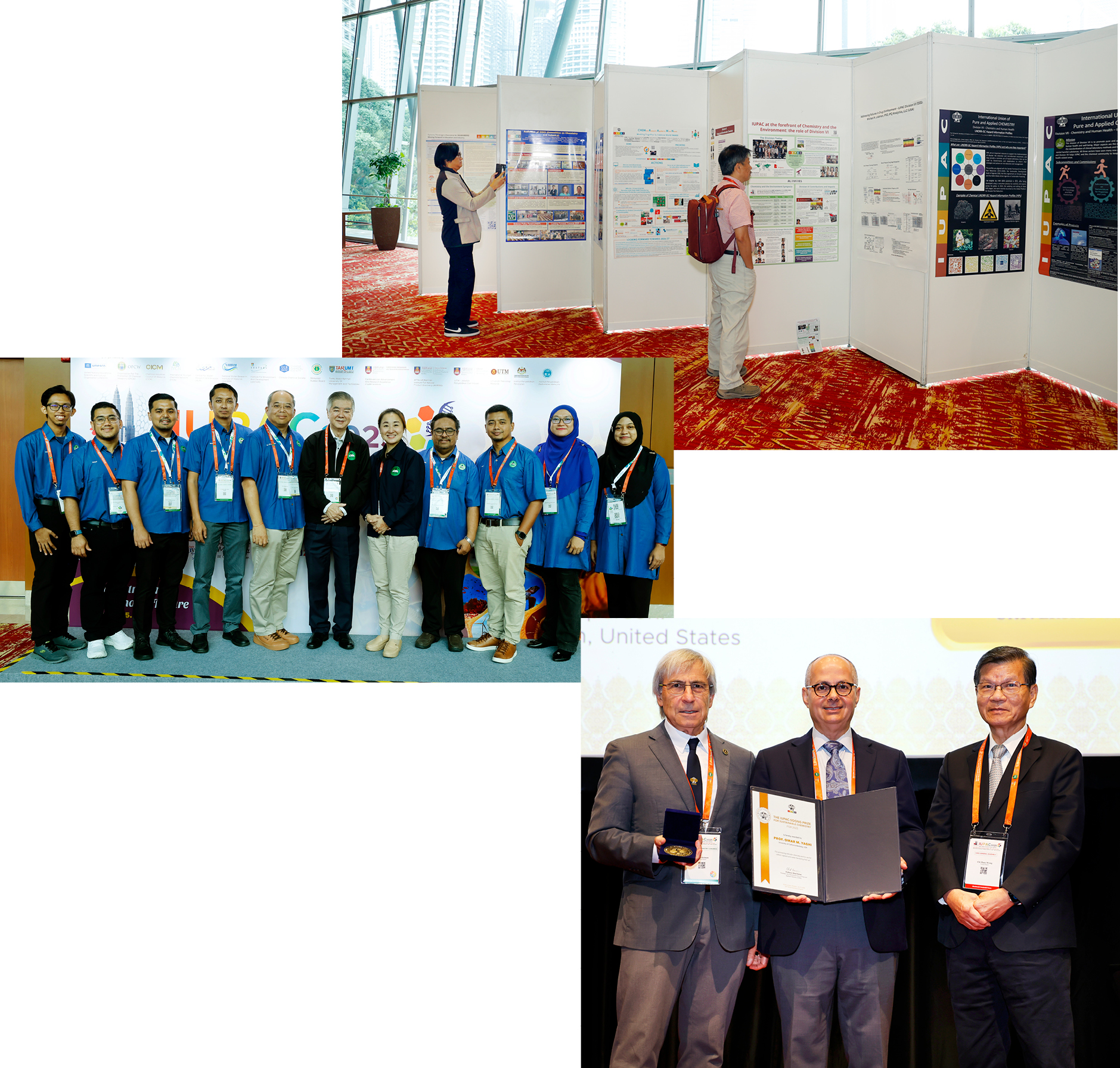
Below: Omar Yaghi received the IUPAC-Soong Prize, on 16 Jul 2025; pictured with Ehud Keinan, IUPAC President (left) and Chi-Huey Wong.
IYCN/ MYCN Young Chemist Programme on Safety:
“IUPAC-Young Scientists Safety Training Workshop” was organized by the International Young Chemists Network and Malaysian Young Chemists Network.
In this workshop, after the introductory talk by Gracia María Romero, Bipul Saha and Tien Thuy Quach, Bipul Saha made a presentation on “Safety in Chemistry.” Ayush Agarwal—IYCN spoke on “Safety from the Perspective of a Young Chemist.” Gracia María Romero—COCI National Representative gave an overview of “IUPAC COCI Safety Training Program.” Finally, there was a group discussion. The whole program was moderated by Lovish Raheja, Executive Board Member of IYCN and Sook Mei Khor of Malaysia.
After 7 days of hectic activities, the program came to an end. In the closing ceremony, the baton was passed from Malaysia to Canada. The next Congress will be held in Montreal in 2027.
A photo report prepared by Victoria Foo and Dee Dee Quah, Project Lead and co-lead IUPAC 2025 is available online at https://isu.pub/xXwnVqD
©2025 by Walter de Gruyter Berlin/Boston
This work is licensed under the Creative Commons Attribution-NonCommercial-NoDerivatives 4.0 International License.
Articles in the same Issue
- Masthead - Full issue pdf
- Past President’s Column
- Chemistry at the Crossroads: Enabling Solutions for a Changing World
- Features
- IUPAC’s 2025 Top Ten Emerging Technologies in Chemistry
- Preventing spread of chemical weapons in an era of rapid technological change
- Why think philosophically about chemistry?
- Spotlight on IUPAC Young Observers
- Spotlight on IUPAC U.S. Young Observers
- IUPAC Wire
- IUPAC Launches Global Call to Action for Responsible Chemistry
- IUPAC Announces the 2025 Top Ten Emerging Technologies in Chemistry
- Actions Taken by IUPAC Council, Kuala Lumpur, Malaysia, July 2025
- Recognising Excellence: CCE 2026 Awards—Call for Nominations
- 2026 IUPAC-Richter Prize—Call for Nominations
- 2026 IUPAC–Soong Prize for Sustainable Chemistry—Call for Nominations
- 2026 IUPAC-Solvay International Award for Young Chemists—Call for Applicants
- Systems Thinking in Chemistry Education—Call for Papers
- Special issue IYQ in PAC
- In Memoriam
- Project Place
- Terminology for Dynamic Polymer Networks and Hydrogels
- Systems Thinking, Sustainability and Chemical Industry
- Small-Scale Chemistry Initiative in India
- Making an imPACt
- Definitions and preferred symbols for mass diffusion coefficients in multicomponent fluid mixtures including electrolytes (IUPAC Technical Report)
- IUPAC/CITAC guide: interlaboratory comparison of categorical characteristics of a substance, material, or object (IUPAC Technical Report)
- Blockchain technology: driving change in the scientific research workflow
- IUPAC Provisional Recommendations
- Basic Classification and Definitions of Polymerization Reactions
- Conference Call
- IUPAC 2025 in Kuala Lumpur Opened with Focus on Sustainability and Excellence
- Restoring Trust in Science: A Global Imperative
- Can the “Right to Science” Restore Public Trust?
- Chemistry for a Fairer, Safer, and More Sustainable World
- The Future of Science in the Digital Age: Chemistry at a Crossroads
- Science at a Crossroads: Restoring Integrity and Public Trust
- Science: A Truth Worth Defending
- Building Trust in Science: A Two-Way Commitment
- Science Under Siege: Confronting the Hydra’s Many Heads
- Sustainable Practices for Promoting Diversity in Chemistry
- Green Chemistry for a Sustainable Future
- Advancing Scientific Terminology & Standards for the Digital Era—DUST Conference 2025
- Stockholm Declaration on Chemistry for the Future
- Mark Your Calendar
- Index
Articles in the same Issue
- Masthead - Full issue pdf
- Past President’s Column
- Chemistry at the Crossroads: Enabling Solutions for a Changing World
- Features
- IUPAC’s 2025 Top Ten Emerging Technologies in Chemistry
- Preventing spread of chemical weapons in an era of rapid technological change
- Why think philosophically about chemistry?
- Spotlight on IUPAC Young Observers
- Spotlight on IUPAC U.S. Young Observers
- IUPAC Wire
- IUPAC Launches Global Call to Action for Responsible Chemistry
- IUPAC Announces the 2025 Top Ten Emerging Technologies in Chemistry
- Actions Taken by IUPAC Council, Kuala Lumpur, Malaysia, July 2025
- Recognising Excellence: CCE 2026 Awards—Call for Nominations
- 2026 IUPAC-Richter Prize—Call for Nominations
- 2026 IUPAC–Soong Prize for Sustainable Chemistry—Call for Nominations
- 2026 IUPAC-Solvay International Award for Young Chemists—Call for Applicants
- Systems Thinking in Chemistry Education—Call for Papers
- Special issue IYQ in PAC
- In Memoriam
- Project Place
- Terminology for Dynamic Polymer Networks and Hydrogels
- Systems Thinking, Sustainability and Chemical Industry
- Small-Scale Chemistry Initiative in India
- Making an imPACt
- Definitions and preferred symbols for mass diffusion coefficients in multicomponent fluid mixtures including electrolytes (IUPAC Technical Report)
- IUPAC/CITAC guide: interlaboratory comparison of categorical characteristics of a substance, material, or object (IUPAC Technical Report)
- Blockchain technology: driving change in the scientific research workflow
- IUPAC Provisional Recommendations
- Basic Classification and Definitions of Polymerization Reactions
- Conference Call
- IUPAC 2025 in Kuala Lumpur Opened with Focus on Sustainability and Excellence
- Restoring Trust in Science: A Global Imperative
- Can the “Right to Science” Restore Public Trust?
- Chemistry for a Fairer, Safer, and More Sustainable World
- The Future of Science in the Digital Age: Chemistry at a Crossroads
- Science at a Crossroads: Restoring Integrity and Public Trust
- Science: A Truth Worth Defending
- Building Trust in Science: A Two-Way Commitment
- Science Under Siege: Confronting the Hydra’s Many Heads
- Sustainable Practices for Promoting Diversity in Chemistry
- Green Chemistry for a Sustainable Future
- Advancing Scientific Terminology & Standards for the Digital Era—DUST Conference 2025
- Stockholm Declaration on Chemistry for the Future
- Mark Your Calendar
- Index

